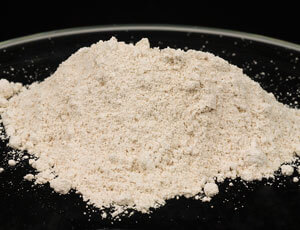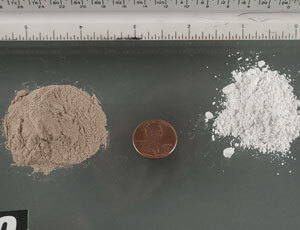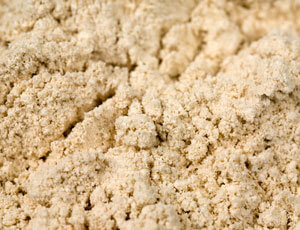- Over-the-Counter Drugs
- Prescription Drugs
Heroin is classified as a Schedule I Drug by the DEA
- The drug has a high potential for abuse.
- The drug has no currently accepted medical treatment use in the U.S.
- There is a lack of accepted safety for use of the drug under medical supervision.
What is heroin?
Heroin is an opioid synthesized from morphine, a naturally-occurring substance extracted from the Asian opium poppy plant. It comes in several forms, most prominently black tar from Mexico and white heroin from Colombia.
Common names include Big H, Black Tar, Chiva, Hell Dust, Horse, Negra, Smack and Thunder.
What does heroin look like?
Heroin is typically found in white or brownish powder form. It also exists as a black sticky substance known on the streets as black tar. Although purer forms of the drug are becoming more common, most street heroin is cut with other drugs, sugar, starch, powdered milk or quinine.
How is heroin abused?
Heroin can be injected, smoked or snorted. High-purity heroin is usually snorted or smoked.
Prescription drug abuse is often a first step to heroin use due to the similar effects found in prescription opioid pain medications such as oxycodone and hydrocodone. Research now suggests abuse of these drugs may open the door to heroin abuse. Some users also start using heroin due to its cheaper price and availability. According to the National Institute on Drug Abuse, nearly 80 percent of heroin users report using prescription opioids prior to heroin.
How does heroin affect a person?
Because it enters the brain so rapidly, heroin is particularly addictive, both psychologically and physically. Heroin abusers report a surge of euphoria or rush, followed by a twilight state of sleep and wakefulness.
Tolerance to the drug develops over time, which leads to additional use in order to achieve the same effect. With higher doses, physical dependence and addiction develop. Heroin addiction is a chronic relapsing disease caused by changes in the brain and characterized by uncontrollable drug-seeking behaviors.
Drugs with similar effects include oxycodone, hydrocodone, codeine, morphine, methadone and fentanyl.
What are the health effects/risks of using heroin?
Because heroin abusers don’t know the actual strength of the drug or its true contents, they’re at a high risk for overdose or death. The effects of a heroin overdose are slow and shallow breathing, blue lips and fingernails, clammy skin, convulsions, coma and death.
Heroin abuse is also associated with a number of serious health conditions, including Hepatitis B/C and HIV. Chronic users may develop collapsed veins, infection of the heart lining and valves, abscesses, constipation and gastrointestinal cramping, and liver or kidney disease. Pulmonary complications can also result from poor health, as well as from heroin’s effects on breathing. Street heroin is often cut with toxic additives, causing clogged blood vessels leading to the lungs, liver, kidneys or brain — all of which leaves the user with permanent damage.
If a dependent user stops the drug abruptly, he or she may experience severe symptoms of withdrawal just a few hours after the last use. Symptoms include restlessness, muscle and bone pain, insomnia, diarrhea and vomiting, cold flashes with goose bumps and kicking movements. Users also experience severe craving for the drug during withdrawal, which can lead to continued abuse and/or relapse.









